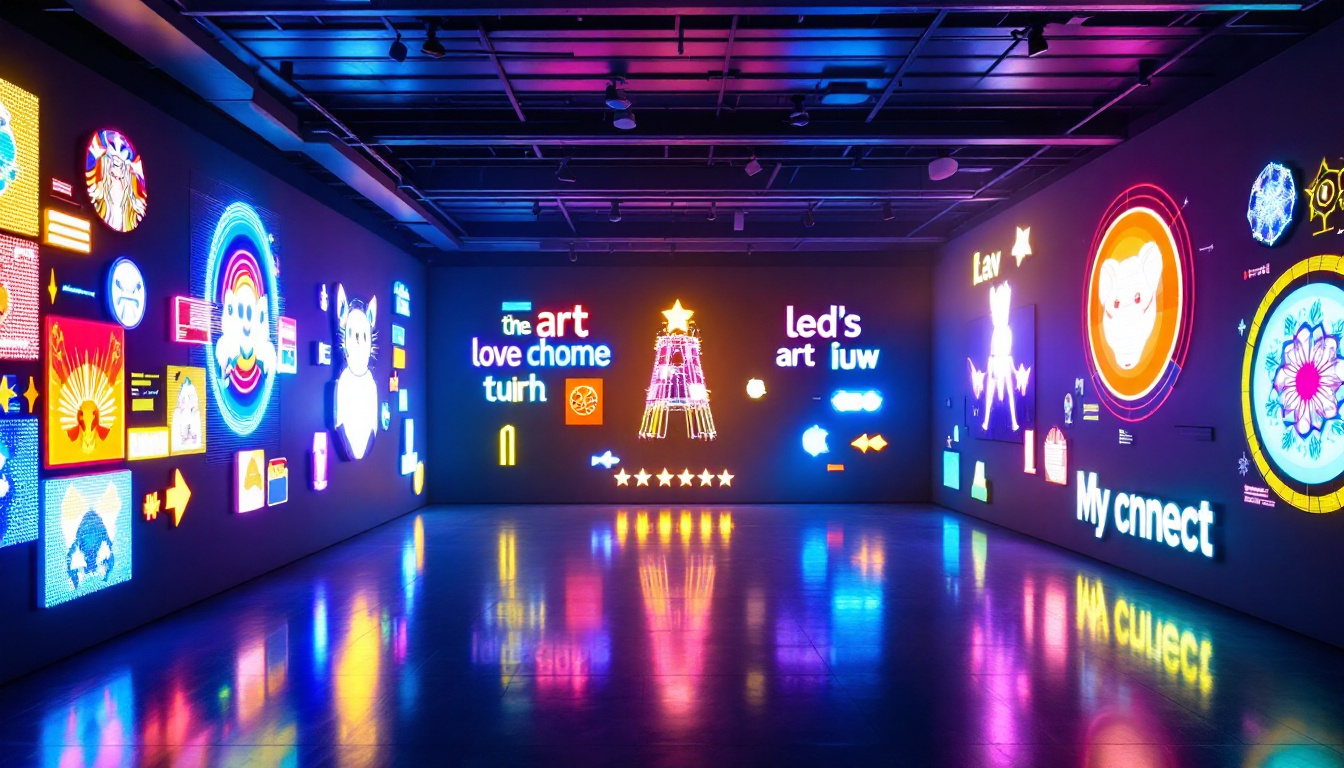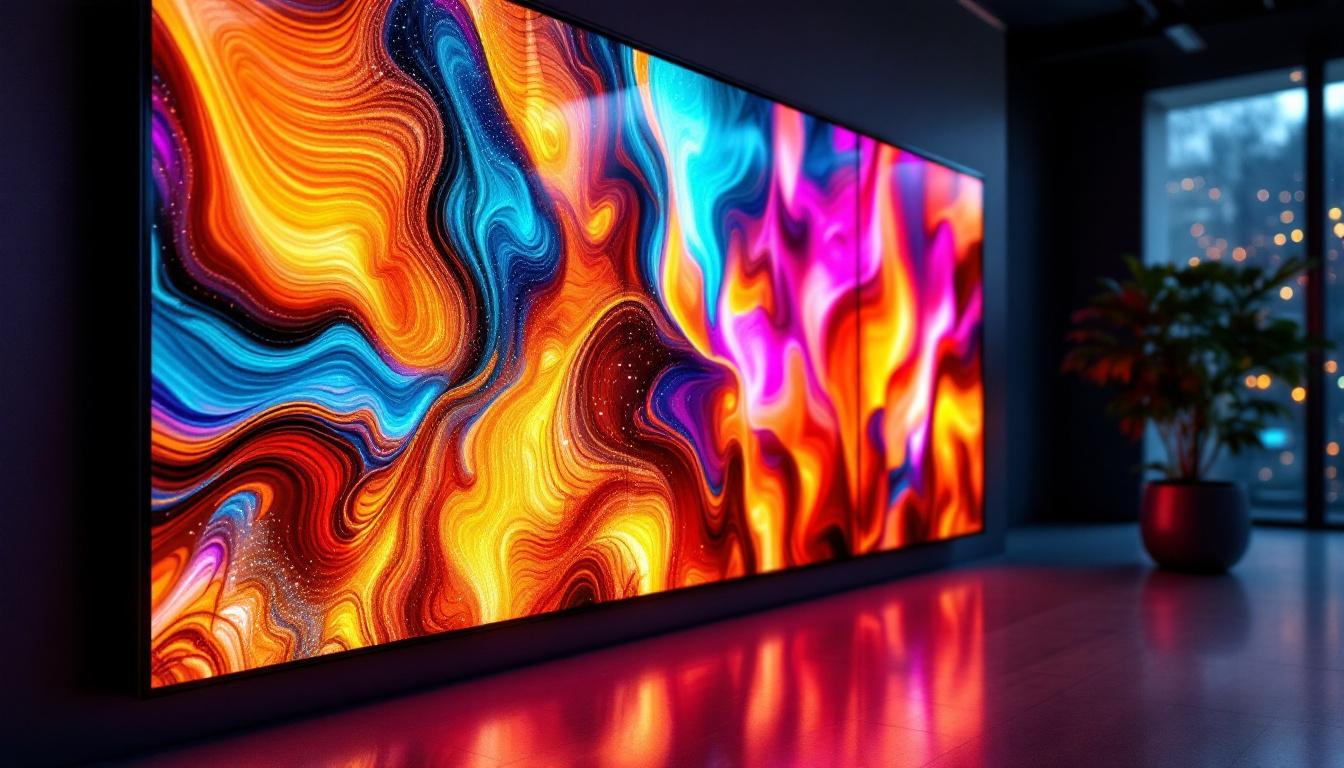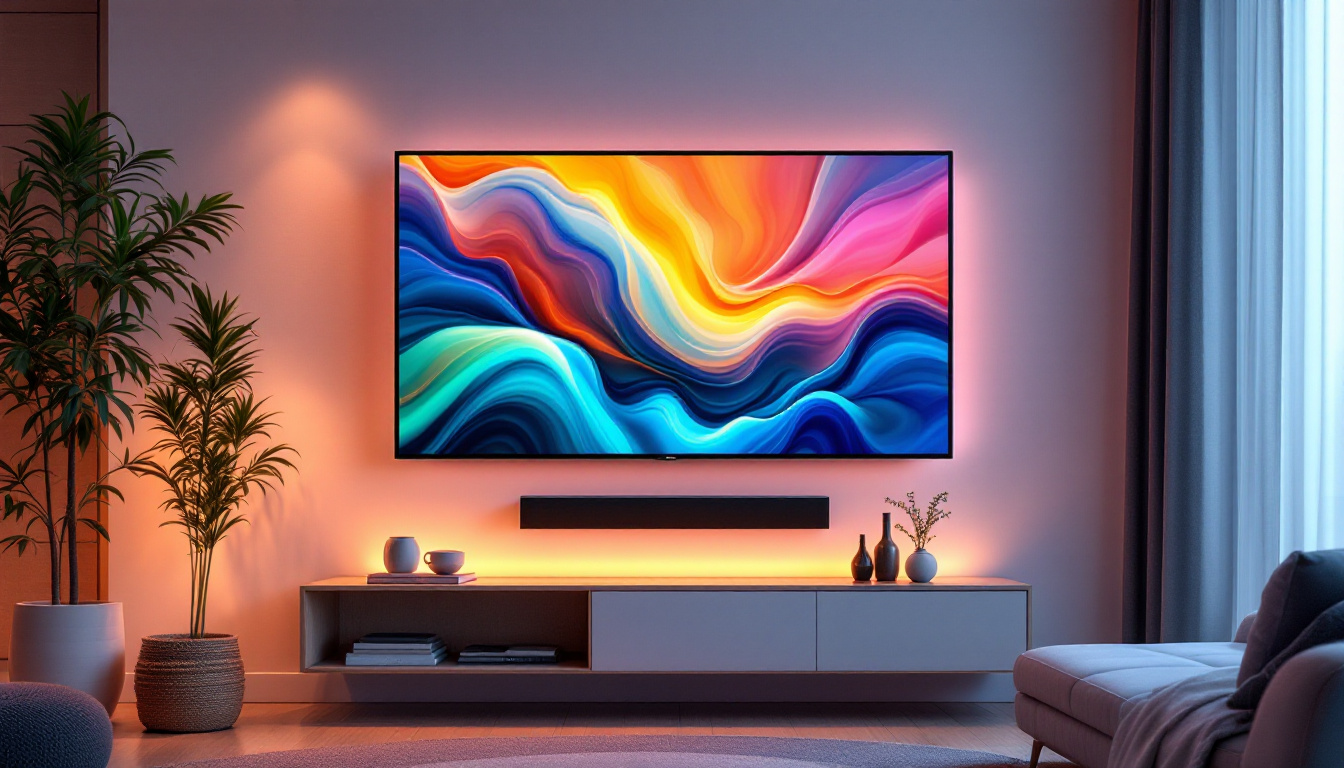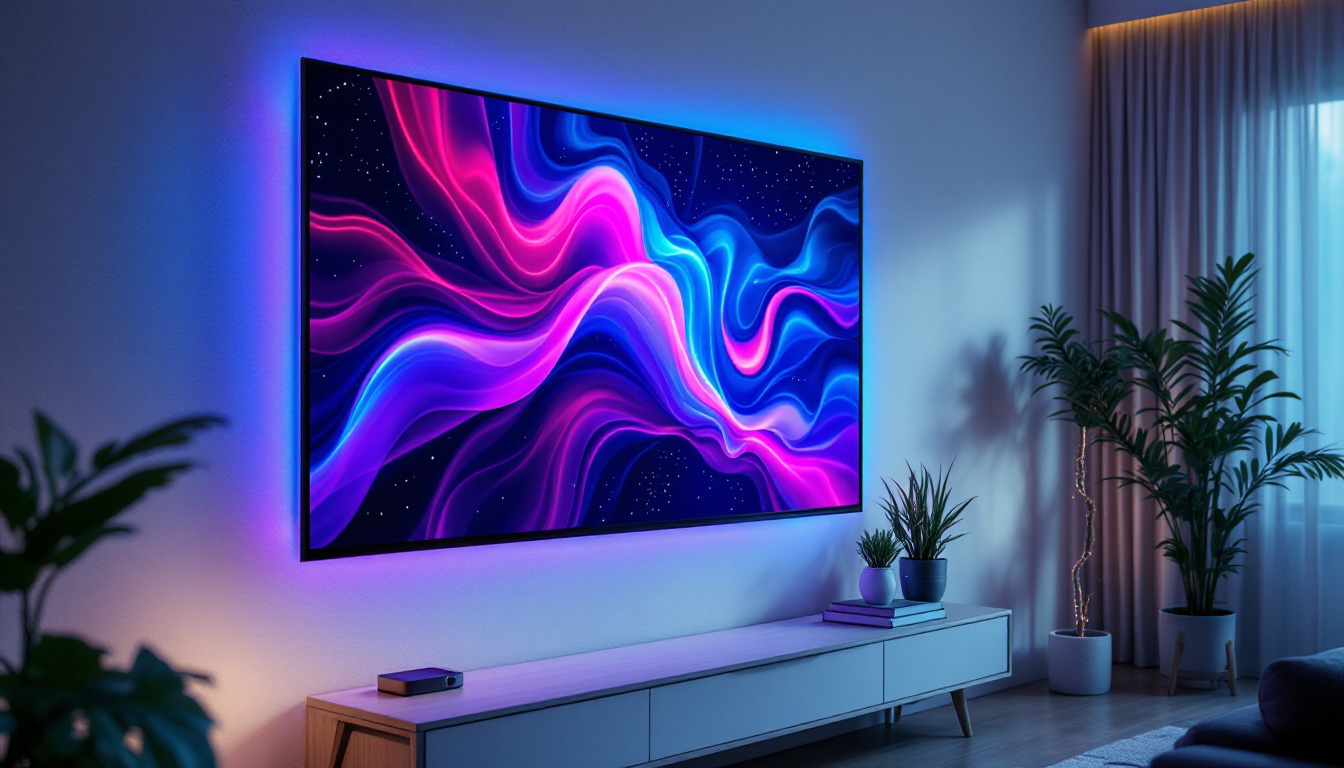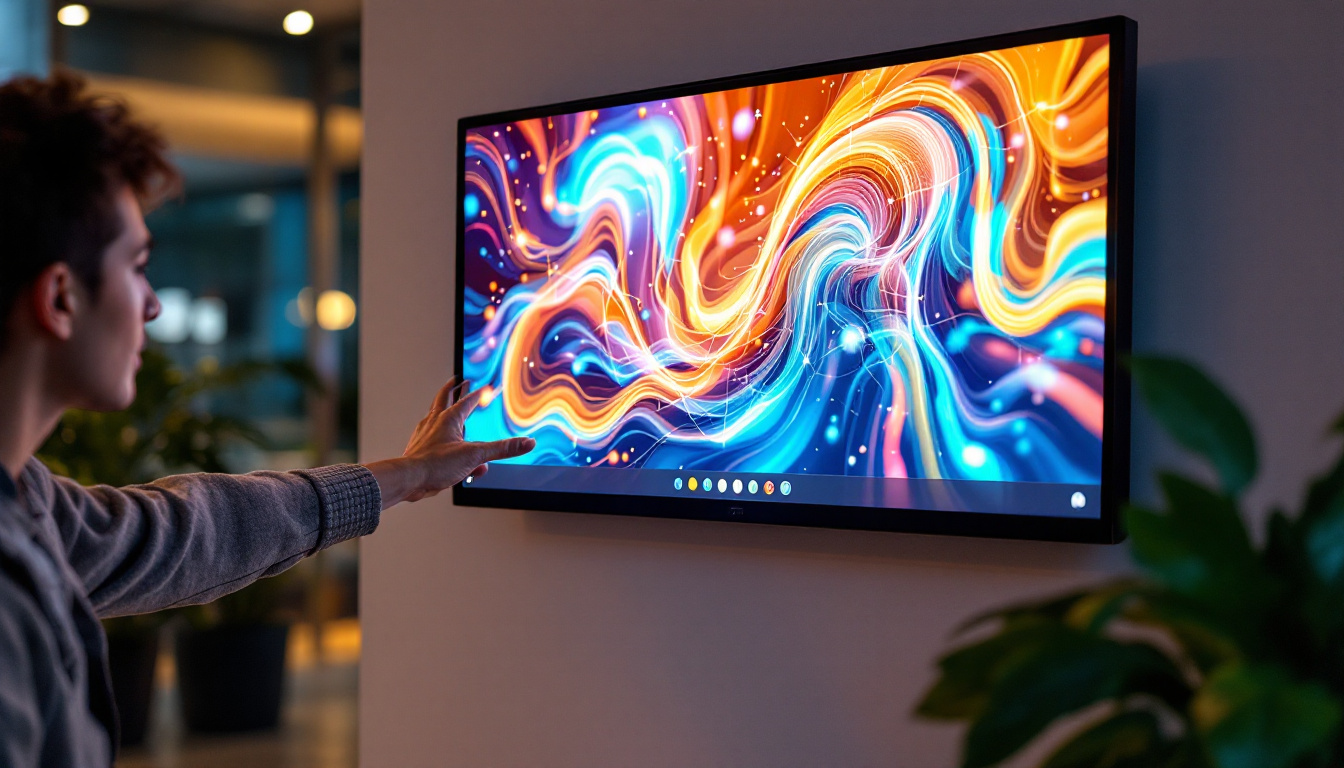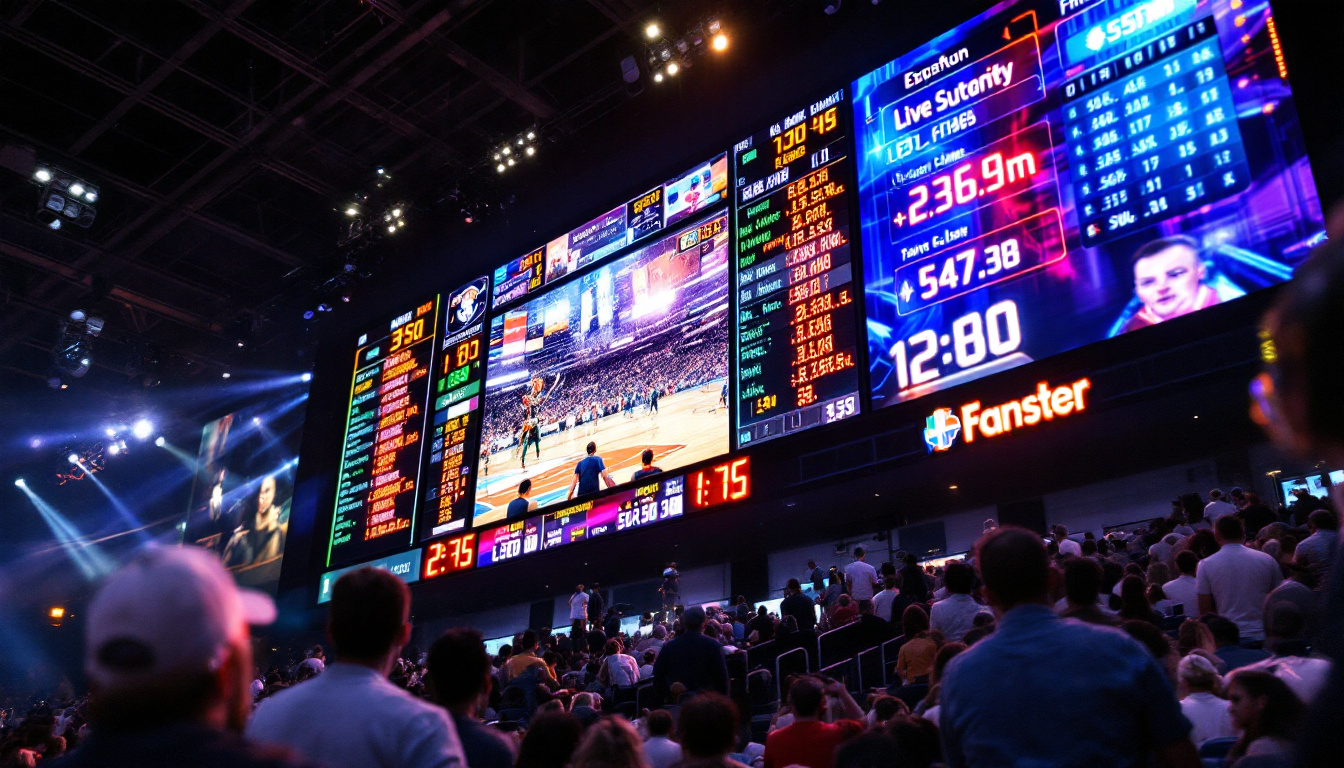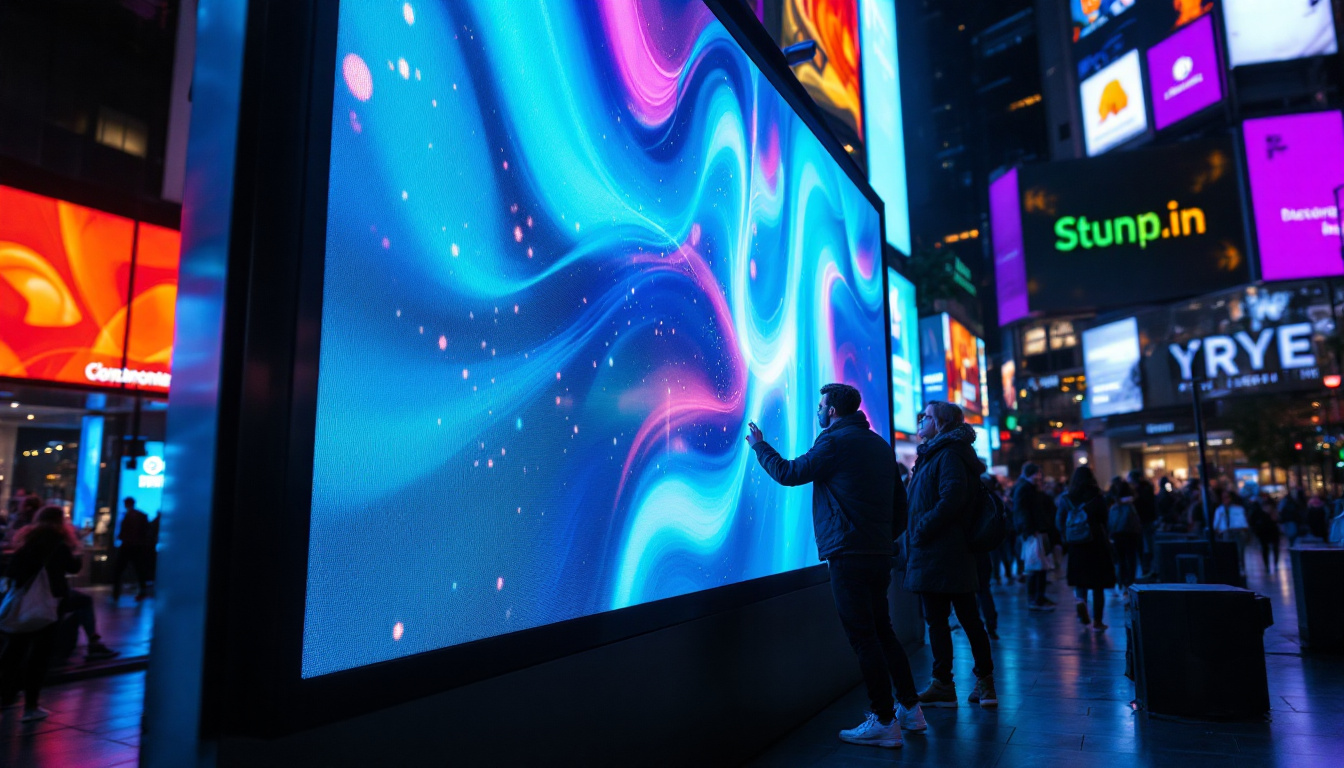Panel Of TV: LED Display Explained
In the world of modern television technology, LED displays have emerged as a dominant force, captivating audiences with their vibrant colors and sharp images. Understanding how these displays work is essential for anyone looking to purchase a new TV or simply wanting to deepen their knowledge of display technology. This article delves into the intricacies of LED displays, their advantages, and how they compare to other types of screens.
What is an LED Display?
LED, or Light Emitting Diode, displays are a type of flat-panel television that utilizes light-emitting diodes to produce images. Unlike traditional LCD screens that rely on fluorescent backlighting, LED displays use a series of tiny diodes to create light directly. This technology allows for brighter images and better energy efficiency, making LED displays a popular choice among consumers. The versatility of LED technology has also led to its application in various fields beyond television, including digital signage, billboards, and even architectural lighting, showcasing its adaptability and wide-ranging appeal.
How LED Displays Work
At the core of an LED display are the diodes themselves, which emit light when an electric current passes through them. These diodes can be arranged in various configurations, including edge-lit and full-array setups. In edge-lit displays, LEDs are positioned along the edges of the screen, while in full-array displays, they are distributed evenly behind the screen for more uniform lighting. This arrangement not only enhances brightness but also allows for improved contrast ratios, making images appear more dynamic and engaging.
When it comes to color reproduction, LED displays utilize a combination of red, green, and blue (RGB) diodes. By adjusting the intensity of each color, the display can create a wide spectrum of colors, resulting in vivid and lifelike images. This capability is further enhanced by technologies such as quantum dots and local dimming, which improve color accuracy and contrast. Quantum dots, for instance, are tiny semiconductor particles that emit specific colors when exposed to light, leading to a broader color gamut and more precise hues. Local dimming, on the other hand, allows specific areas of the screen to dim or brighten independently, enhancing the overall viewing experience by providing deeper blacks and brighter highlights.
Types of LED Displays
There are primarily two types of LED displays: standard LED and OLED (Organic Light Emitting Diode). While both technologies use diodes, OLED displays offer superior contrast and color depth because each pixel emits its own light, allowing for true blacks and more vibrant colors. This self-emissive nature of OLED technology means that when a pixel is turned off, it emits no light at all, resulting in an infinite contrast ratio that is particularly appealing for movie enthusiasts and gamers alike.
Standard LED displays, on the other hand, rely on backlighting, which can lead to issues with black levels and contrast. However, they are often more affordable and can still deliver excellent performance for most viewing needs. Additionally, advancements in LED technology have led to the development of Mini-LED and Micro-LED displays, which offer even finer control over lighting and improved picture quality. Mini-LED uses smaller LEDs for backlighting, allowing for more precise local dimming zones, while Micro-LED technology takes it a step further by utilizing microscopic LEDs that can create images without the need for a backlight at all, further enhancing the potential for stunning visual experiences.
Advantages of LED Displays
LED displays come with a variety of benefits that make them appealing to consumers. From energy efficiency to superior image quality, these advantages contribute to their popularity in the market.
Energy Efficiency
One of the most significant advantages of LED displays is their energy efficiency. Compared to traditional LCD or plasma screens, LED televisions consume less power while delivering brighter images. This efficiency not only reduces electricity bills but also has a positive impact on the environment.
As energy consumption becomes a more pressing concern for consumers, the demand for energy-efficient products continues to rise. LED displays are often ENERGY STAR certified, ensuring they meet strict energy efficiency guidelines. This certification not only signifies lower energy usage but also encourages manufacturers to innovate and improve their technologies, leading to even more efficient models in the future. Moreover, the reduced heat output of LED displays means that they require less cooling, further enhancing their energy-saving capabilities.
Image Quality
Image quality is a critical factor for any television, and LED displays excel in this area. With their ability to produce brighter images and a wider color gamut, LED TVs provide an immersive viewing experience. The incorporation of advanced technologies, such as HDR (High Dynamic Range), further enhances the image quality by allowing for greater contrast between light and dark areas of the screen.
Additionally, many LED displays feature high refresh rates, which reduce motion blur during fast-paced scenes, making them ideal for sports and action movies. This combination of brightness, color accuracy, and refresh rates makes LED displays a top choice for home entertainment. Furthermore, the advancements in local dimming technology allow for improved contrast ratios, enhancing the depth and detail in darker scenes. This means that viewers can enjoy a more cinematic experience right in their living rooms, with visuals that are both striking and true to life.
Longevity and Durability
LED displays are known for their longevity and durability compared to other types of screens. With a lifespan that can exceed 50,000 hours, these televisions can provide years of reliable service. This durability is particularly advantageous for consumers who want a long-term investment in their home entertainment systems.
Furthermore, LED displays are less susceptible to burn-in issues that can affect OLED screens, making them a safer choice for varied viewing habits, such as gaming or watching news channels with static logos. Their robust construction also means they can withstand the rigors of daily use without significant degradation in performance. Many manufacturers offer warranties that reflect the confidence in the durability of their LED products, often covering several years of use. This assurance, combined with their resistance to environmental factors like humidity and temperature fluctuations, makes LED displays a practical choice for a wide range of settings, from home theaters to commercial displays in retail environments.
Comparing LED Displays to Other Technologies
While LED displays are undoubtedly popular, it’s essential to compare them to other display technologies to understand their unique advantages and limitations.
LED vs. LCD
LED and LCD (Liquid Crystal Display) are often confused, but they are not the same. LCD screens use liquid crystals to create images and require a backlight to illuminate the display. LED displays, on the other hand, use diodes for backlighting, resulting in improved brightness and color accuracy.
In terms of performance, LED displays generally outperform traditional LCDs, particularly in brightness and energy efficiency. However, both technologies can offer excellent picture quality, depending on the specific model and features.
LED vs. OLED
When comparing LED to OLED, the differences become more pronounced. OLED displays offer superior contrast ratios and color depth because each pixel emits its own light. This capability allows for true blacks and vibrant colors that can be difficult for LED displays to match.
However, OLED technology can come with a higher price tag and is more susceptible to burn-in, where static images can leave a permanent mark on the screen. For consumers prioritizing picture quality and willing to invest, OLED may be the better option. For those seeking a balance of performance and affordability, LED remains a strong contender.
Choosing the Right LED Display
With a plethora of options available, selecting the right LED display can be a daunting task. Several factors should be considered to ensure that the chosen television meets the viewer’s needs.
Screen Size and Viewing Distance
Screen size is one of the most critical factors when choosing a TV. The ideal size depends on the viewing distance, which can vary based on personal preference and the layout of the room. A general rule of thumb is to sit at a distance of 1.5 to 2.5 times the diagonal size of the screen for optimal viewing.
For example, if a viewer plans to sit 8 feet away from the TV, a screen size of 55 to 75 inches is typically recommended. This ensures that the viewer can fully appreciate the details and colors of the display without straining their eyes.
Resolution and Picture Quality
Resolution plays a significant role in picture quality, with 4K (Ultra HD) becoming the standard for new televisions. 4K displays offer four times the resolution of 1080p, resulting in sharper images and more detail, particularly on larger screens.
Additionally, features such as HDR can enhance the viewing experience by providing a broader range of colors and improved contrast. Consumers should consider their viewing habits and the types of content they enjoy when evaluating resolution and picture quality.
Smart Features and Connectivity
In today’s digital age, smart features and connectivity options are essential for many consumers. Most modern LED displays come equipped with smart technology, allowing users to stream content from popular services like Netflix, Hulu, and Amazon Prime directly on their TVs.
Connectivity options, such as HDMI and USB ports, are also crucial for connecting external devices like gaming consoles, Blu-ray players, and sound systems. Ensuring that the chosen TV has the necessary ports and features for a seamless entertainment experience is vital.
Conclusion
LED displays have revolutionized the television market, offering a combination of vibrant colors, energy efficiency, and longevity. Understanding the technology behind LED displays, their advantages, and how they compare to other options is essential for making an informed purchasing decision.
As technology continues to evolve, consumers can expect further advancements in display quality and features. Whether opting for an LED or exploring other technologies like OLED, the key is to find a television that meets individual needs and enhances the overall viewing experience.
Discover LumenMatrix’s Innovative LED Solutions
Ready to elevate your visual experience with the latest in LED technology? Look no further than LumenMatrix, a pioneer in the field, committed to bringing you the most advanced LED display modules. From Indoor and Outdoor LED Walls to specialized solutions like Vehicle and Sports Displays, LumenMatrix offers a wide array of products designed to make your brand stand out and your messages resonate with stunning clarity. Embrace the future of visual communication and check out LumenMatrix LED Display Solutions today to transform your space with captivating and energy-efficient displays.











